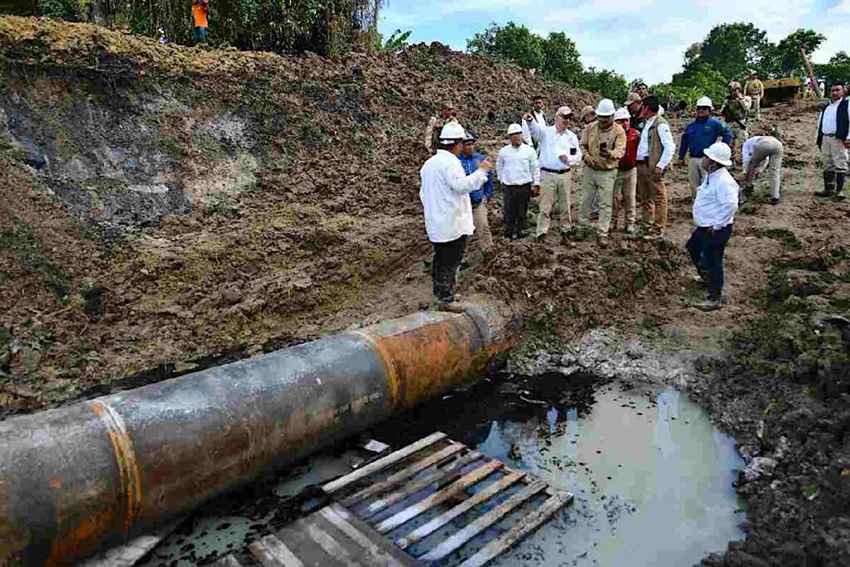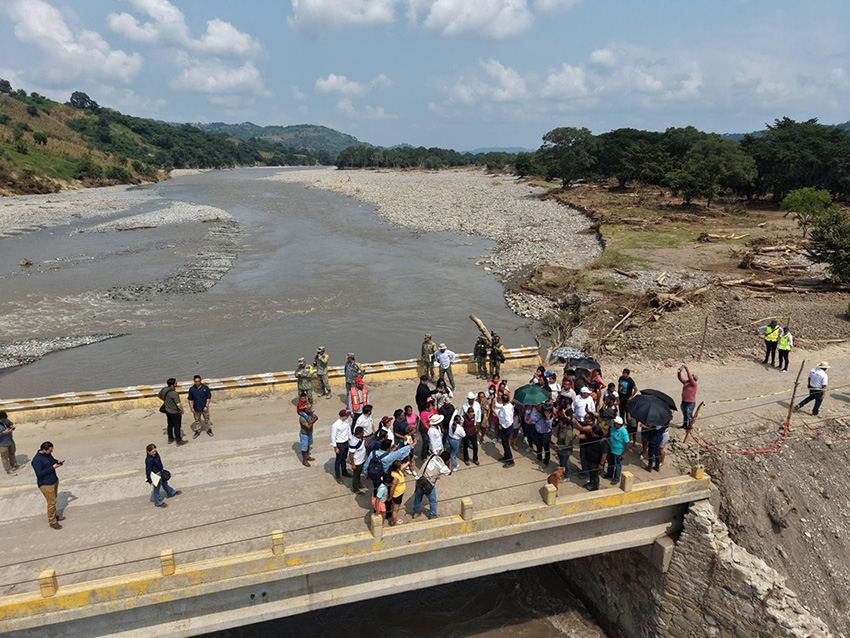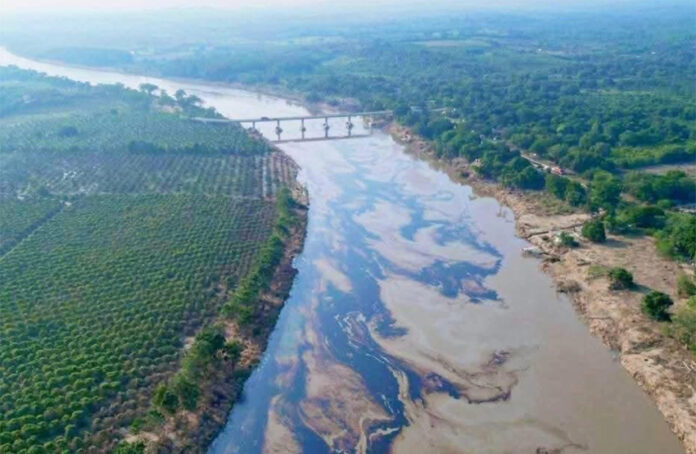The recent heavy rain in Veracruz damaged a section of the Poza Rica-Ciudad Madero petroleum pipeline, leading to a significant oil spill in the Pantepec River, according to the state oil company Pemex.
Pemex said in a statement on Tuesday that it had repaired the affected section of its pipeline, which is located in the municipality of Álamo Temapache in northern Veracruz.

Pemex said that it responded “immediately” to the pipeline’s “loss of containment” through “the activation of industrial and environmental safety protocols.”
It didn’t say when the damage to the pipeline and the resultant oil spill occurred. Torrential rain fell in Veracruz and the neighboring states of Puebla, Hidalgo and San Luis Potosí two weeks ago, causing widespread flooding that has claimed at least 79 lives.
A resident of Álamo, a town on the Pantepec River that was severely affected by flooding, told the Associated Press that locals became aware of the oil spill last weekend.
“Sincerely, we’re very worried,” Arturo de Luna said.
A video posted to social media showed a splotchy spill of oil on the muddy brown water of the Pantepec River. The spill extended into the Tuxpan River, which is part of the same river system.
Pemex said that the spill occurred along an eight-kilometer-long stretch of river, but local residents say the damage is more extensive, the news site Latinus reported.
Recovery of ecosystem could take years, activist says
Alejandra Jiménez, an activist with the water-focused environmental organization Foundation Chalchi, told the Associated Press earlier this week that it was too early to fully assess the impact of the oil spill. However, she said that the recovery of the ecosystem could take years.
“The prevention phase didn’t happen, so now they have to keep it from spreading,” Jiménez said.

The Pantepec River is a significant river, originating in the state of Hidalgo and emptying into the Gulf of Mexico near Tuxpan, Veracruz. It supplies water for a number of communities including Tuxpan.
According to the news magazine Proceso, local residents reported that oil had reached Veracruz Water Commission pumps that supply water to Tuxpan. Residents also reported a “strong smell of fuel,” Proceso said.
Containment and cleanup
Pemex said Tuesday that federal, state and municipal authorities had collaborated to install two containment barriers and oil-absorbing booms in the Pantepec River.
The state oil company also said that “pumping and surface collection equipment” was being used to remove oil from the river.
“With the main operations already completed, Pemex continues cleanup and remediation work along the riverbanks and nearby areas. During the day, three additional [containment] barriers will be installed. Specialized personnel are carrying out cleaning tasks, waste collection, and the application of absorbent materials to restore the environment’s natural conditions,” Pemex said Tuesday.
In a separate statement also issued on Tuesday, the state oil company said that “more than 180,000 liters of hydrocarbons” had been “recovered” following the installation of oil-absorbing barriers.
A week after Mexico’s floods, the death toll is at 72 and dozens remain missing
It noted that more than 600 people, including 500 from Pemex and the Mexican Navy, were responding to the situation. Some of those workers were carrying out operations of “suction and removal of hydrocarbons contained in the barriers,” Pemex said.
Oil removed from the river was taken away in Pemex tanker trucks.
On Wednesday, Pemex said that “intense” work to contain and clean up the oil spill — including the installation of additional oil-absorbing barriers — was continuing. The state oil company also said that the Poza Rica-Madero pipeline had “safely resumed operations.”
For its part, the Navy Ministry (SEMAR) said on Wednesday that the oil spill had been contained. The ministry said that meteorological and tidal conditions were being monitored in order to make any necessary adjustments to “contention, recovery and cleanup operations.”
“… This institution is carrying out precise monitoring, employing two airplanes, a helicopter, two drones, seven vessels, and ten vehicles of the Mexican Navy,” SEMAR said.
The ministry explained that the navy is conducting “reconnaissance flights as well as maritime and land patrols in the municipalities at greatest risk, such as Álamo and Tuxpan, in order to monitor the movement of hydrocarbons in the Pantepec River through direct observation.”
With reports from Proceso, Latinus, El Economista and AP
